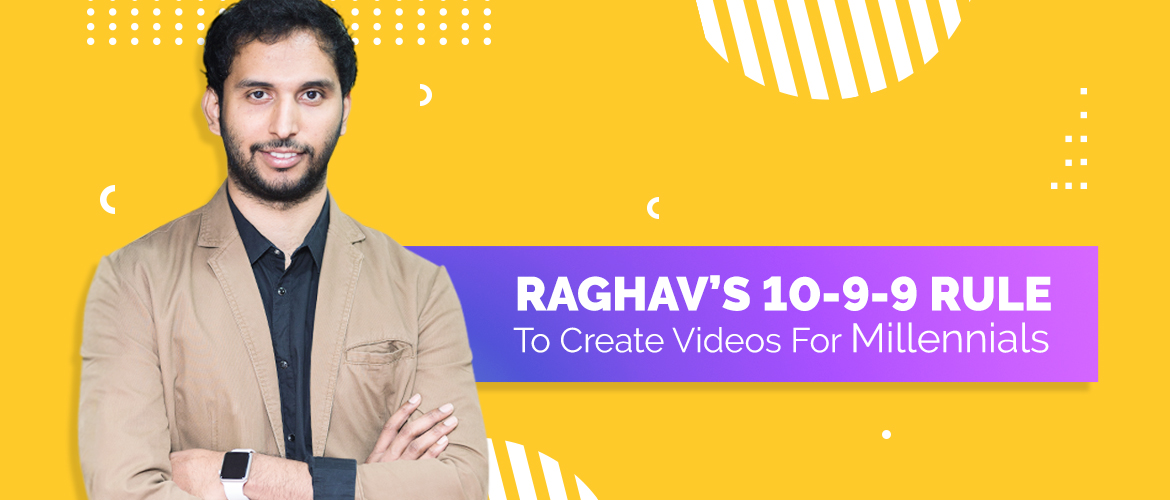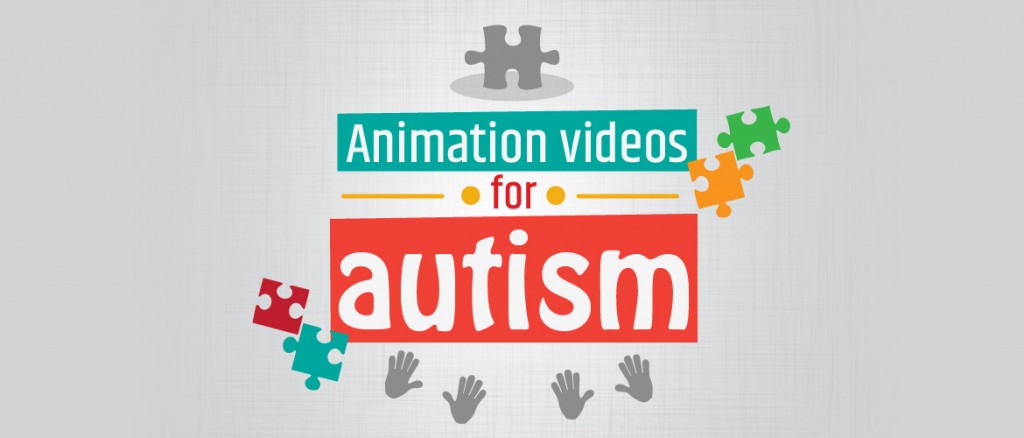Raghav's 10-9-9 rules to create Videos for Millennials
With the phenomenal rise of DIY apps, everyone has gotten the power to create studio-quality animations. The ease of production has also given rise to a lot of videos that could have been much better! This is mainly because people haven't really sat down and analyzed what works and what doesn't. Moreover, millennials being much more internet savvy, get exposed to tons of videos every day. If you want to get their attention, your videos need to stand out! Being in the business of helping people create really cool videos, our videos have to be extra good! Over the years, our CEO, Raghav has formulated the 10-9-9 rule! It's a tried and tested formula he arrived at, after working with thousands of clients while running Bode Animation - a video studio!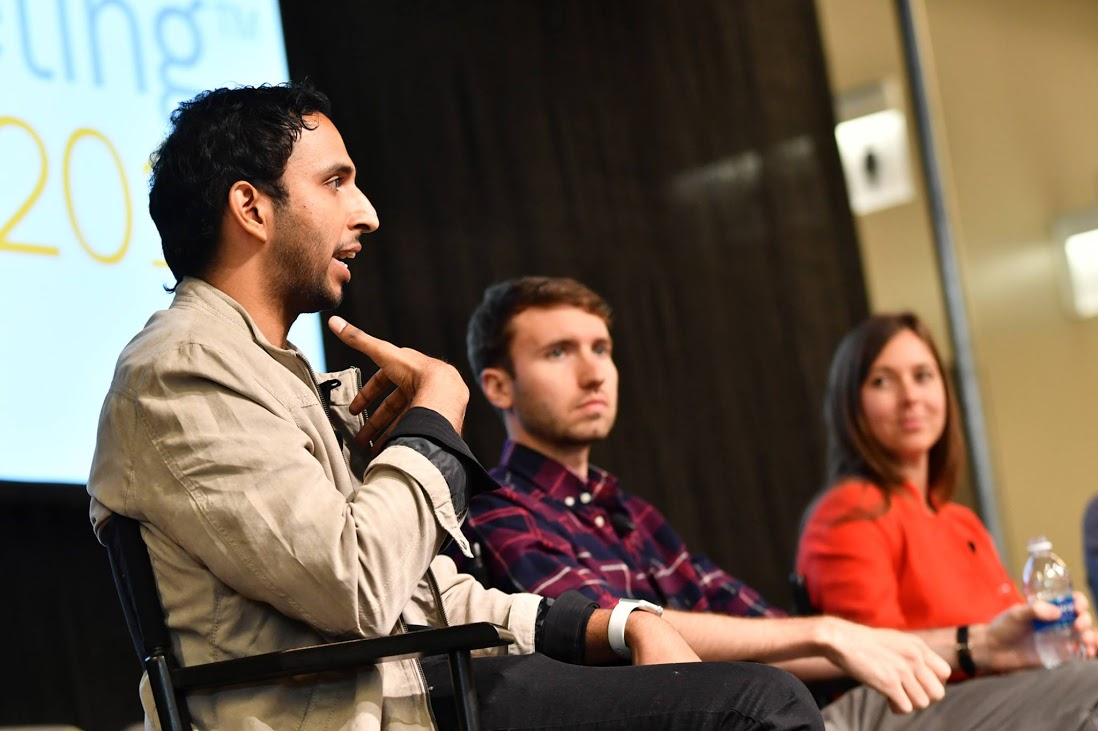
What exactly does 10-9-9 stand for?
Each number in the 10-9-9 formula denotes a particular aspect of a 90 second video. We chose this as a standard because our users use Animaker to create explainer videos, product videos and social videos around 90 seconds in length. So here’s what it means: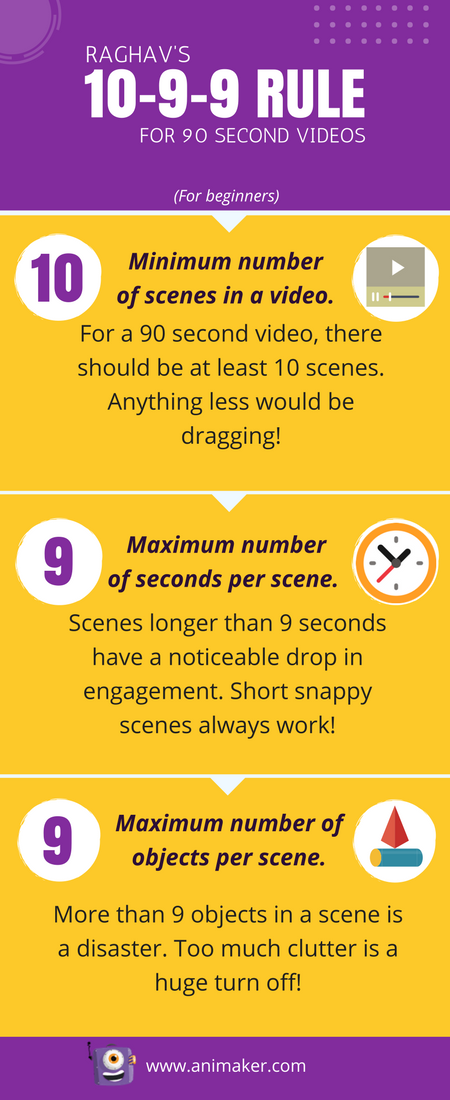
- The 10-9-9 rule applies for beginners who are just getting started
- This ratio applies to 90-second videos. Change the ratio proportionally according to the video length!
Why at least 10 scenes?
Many people create long videos with very less scenes. While this makes sense for live action videos, for animated videos, it can be a bit dragging! As part of our customer outreach program we identified such videos and asked our users to recreate the same video with more scenes. Suddenly, things were more engaging! We suggested a few of our users to create a video with the same script but double the number of scenes. Suddenly, things were more engaging! So as a starting point make sure that you have a bare minimum of at least 10 scenes per video!The HMB Methodology
This methodology will help you craft videos that scientifically draw people and gets them to take action. It divides the 10 scenes into 3 sections:- Hook (1-3 scenes): The hook is the first couple of scenes in your video. It'll decide how many people will actually watch your video. If the hook sucks, you'll have too many bounces early on. Make sure it's really attractive. You should try to incite strong emotions like curiosity. The hook is more important than ever - on Facebook thanks to the autoplay feature.
- Meat (8 or more scenes): The meat is the content of your video. It revolves around the core message you are trying to communicate with your audience. This should live up to the hook of your video. If it doesn't, you'll have many people leaving in the middle of your video. Done well, the Meat will increase the success of the next part - the Bait!
- Bait (1 scene): The Bait is the last scene of your video. This is where you make your viewers take some action. It could be something as simple as - ‘Share this with your friends!’. You can even try to drive them to your blog. The Pull should be thought of well in advance. Before creating any video, think how this video fits into your overall marketing strategy. If it doesn't really fit in, even a viral video is of no use.
The 9-Second rule
For an animated video to be engaging, things have to be moving. Short snappy scenes keep things hip and fun! Scenes with more than 9 seconds duration can be dragging. Check out this vertical video we created for our Facebook Ads Case Study:The 9-Object Rule
Any element on the screen is called an object. This includes - text, props, animated characters, images, charts, etc. that you'll find inside the Animaker Library. Too many objects in 1 scene can be cluttering and distracting. Especially since the minimalism wave hit the design industry, too many objects is regarded as unprofessional. Raghav says that a crowded scene is the biggest turn off for all viewers! He prescribes not more than 9 objects in a lengthy scene. For shorter ones, it should be even less! Here's an example: Notice how everything has been communicated with minimal objects!Video Length matters!
Video Length is a much debated topic. Some say long in-depth videos are great, while others say short videos are preferable. In our experience, videos that are generally short work really well. Our friends in Wistia confirmed our theory in a recent study and found out that the engagement levels dropped significantly after 2 minutes. If you find that your video is longer than 2 minutes, make sure your content is top notch.Why short videos are preferable?
The main reason is that millennials are very busy people. Time is the number one decision making quotient. In many cases, much more than money! This is why companies like Uber are valued over billions of dollars. They save people tons of time! Moreover, the attention span of millennials have also gone down in this digital era. So here's the deal - respect their time and you're videos will hit GOLD!Raghav's Bonus Tips
When I finished the first draft of this blog, I couldn't feel the usual tinge of delight throbbing within. Something was missing. So I set up a meeting with the man himself! I was able to scrape out 2 more bonus tips from the back of his mind:Font Size
Not many people think about this while creating a video. More than 50% web traffic is mobile traffic and almost all this traffic are millennials. Moreover, the time they spend on the mobile is only increasing: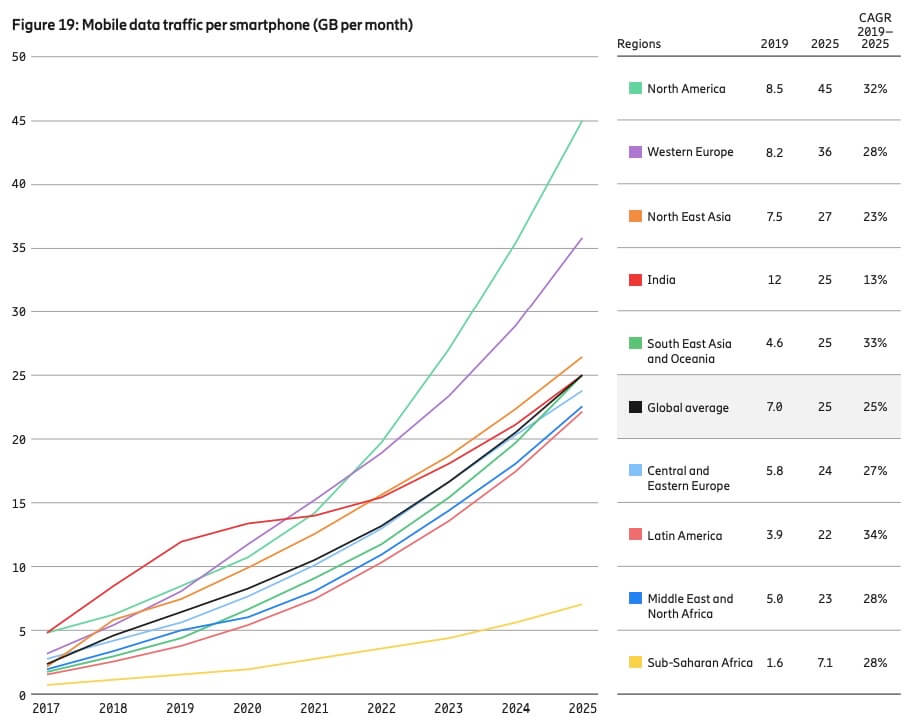 Source: SmartInsights
Source: SmartInsightsNormal text sizes would be barely visible in smaller screens and thus irritating! Even if you follow the 10-9-9 rule, this small mistake can ruin everything! As a standard procedure make sure the font size is at least 30px.

